AP Psych: Sensation & Perception
1/52
There's no tags or description
Looks like no tags are added yet.
Name | Mastery | Learn | Test | Matching | Spaced |
|---|
No study sessions yet.
53 Terms
Sensation
the process by which our sensory receptors and nervous system receive and represent stimuli from our environment
Perception
process of organizing and interpreting sensory information, enabling us to recognize meaningful objects
Bottom-up processing
analysis beginning with sensory receptors, working up to brain’s integration of sensory info
Top-down processing
aruct perceptions from sensory input by drawing on expectations
Selective Attention
the focusing of conscious awareness on a particular stimulus
Cocktail Party Effect
ability to attend to one auditory stimulus while filtering out others Ex: focusing on one voice among many
-Selective attention and accidents
-Driving + texting = shift in selective attention
-fMRI: brain activity vital to driving drops 37%
when attending to conversation
inattentional blindness
failing to see visible objects when our attention is directed elsewhere
change blindness
when we fail to notice changes in the environment
Absolute Threshold
minimum stimulation needed to detect a particular stimulus 50% of the time
Signal Detection Theory
a theory predicting how and when we detect the presence of a stimulus amid background noise, depending on both the intensity of the stimulus and the observer's psychological state.
Subliminal Stimuli
stimuli below one’s absolute threshold for conscious awareness (<50%)
Difference Threshold (aka Just Noticeable Difference)
minimum difference between two stimuli required for 50% detection
-We need low absolute thresholds, as well as the ability to detect small differences between stimuli, which is essential for accurate perception.
Weber’s Law
to be perceived as different, 2 stimuli must differ by a minimum percentage (varies depending on stimuli
Sensory Adaptation
diminished sensitivity as a result of constant stimulation
Perceptual Set
A mental predisposition to perceive one thing and not another (top-down process)
-Once we have formed an idea about reality, we have more difficulty seeing it another way
Transduction
conversion of one form of energy to another—> transferring stimuli into neural impulses our brain can interpret
-receive sensory info
-transformed into neural impulses
-information then delivered to brain
wavelength
the distance from the peak of one wave to the next, which determines the color we experience (pitch for hearing)
Amplitude/Intensity
amount of energy in a light/ sound wave which we perceive as brightness/ volume
Cornea
The transparent front layer of the eye that helps focus light onto the retina. It also provides protection and helps to control the amount of light entering the eye.
Pupil
The adjustable opening in the center of the eye that regulates the amount of light entering the eye by changing size.
Iris
The colored part of the eye surrounding the pupil, responsible for controlling the size of the pupil and regulating light entry.
Lens
A transparent structure behind the iris that changes shape to help focus light onto the retina for clear vision.
Retina
The light-sensitive layer at the back of the eye that converts light into neural signals for visual processing.
Accommodation
The process by which the lens changes shape to focus light on the retina, allowing for clear vision at varying distances.
Cones
Photoreceptor cells in the retina that function in bright light and enable color vision.
Rods
Photoreceptor cells in the retina that are highly sensitive to light and allow for vision in dim light conditions, but do not convey color.
Bipolar cells
Neurons in the retina that transmit signals from photoreceptors (rods and cones) to ganglion cells, playing a crucial role in visual processing.
Ganglion cells
Neurons in the retina that receive signals from bipolar cells and transmit visual information to the brain via the optic nerve.
Optic nerve
The bundle of nerve fibers that carries visual information from the retina to the brain, enabling the perception of sight.
Thalamus
A brain structure that acts as a relay station for sensory information, including visual signals, before it reaches the cerebral cortex.
Occipital lobe
The brain region located at the back of the head that is primarily responsible for processing visual information from the eyes.
Visual Cortex
The area of the brain located in the occipital lobe that processes visual information, including aspects such as color, movement, and shape.
Fovea
The small depression in the retina where visual acuity is highest, allowing for sharp central vision and detailed color perception.
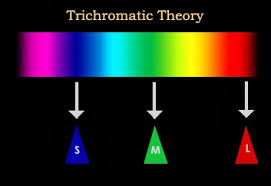
Trichromatric Theory
A theory of color vision that proposes three types of cone receptors in the retina, each sensitive to different wavelengths of light corresponding to red, green, and blue.
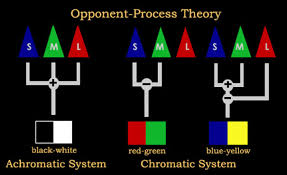
Opponent Process Theory
A theory of color vision that suggests color perception is controlled by the activity of three opponent processes: red-green, blue-yellow, and black-white. This contrasts with the trichromatic theory by explaining how colors can be perceived in opposing pairs.
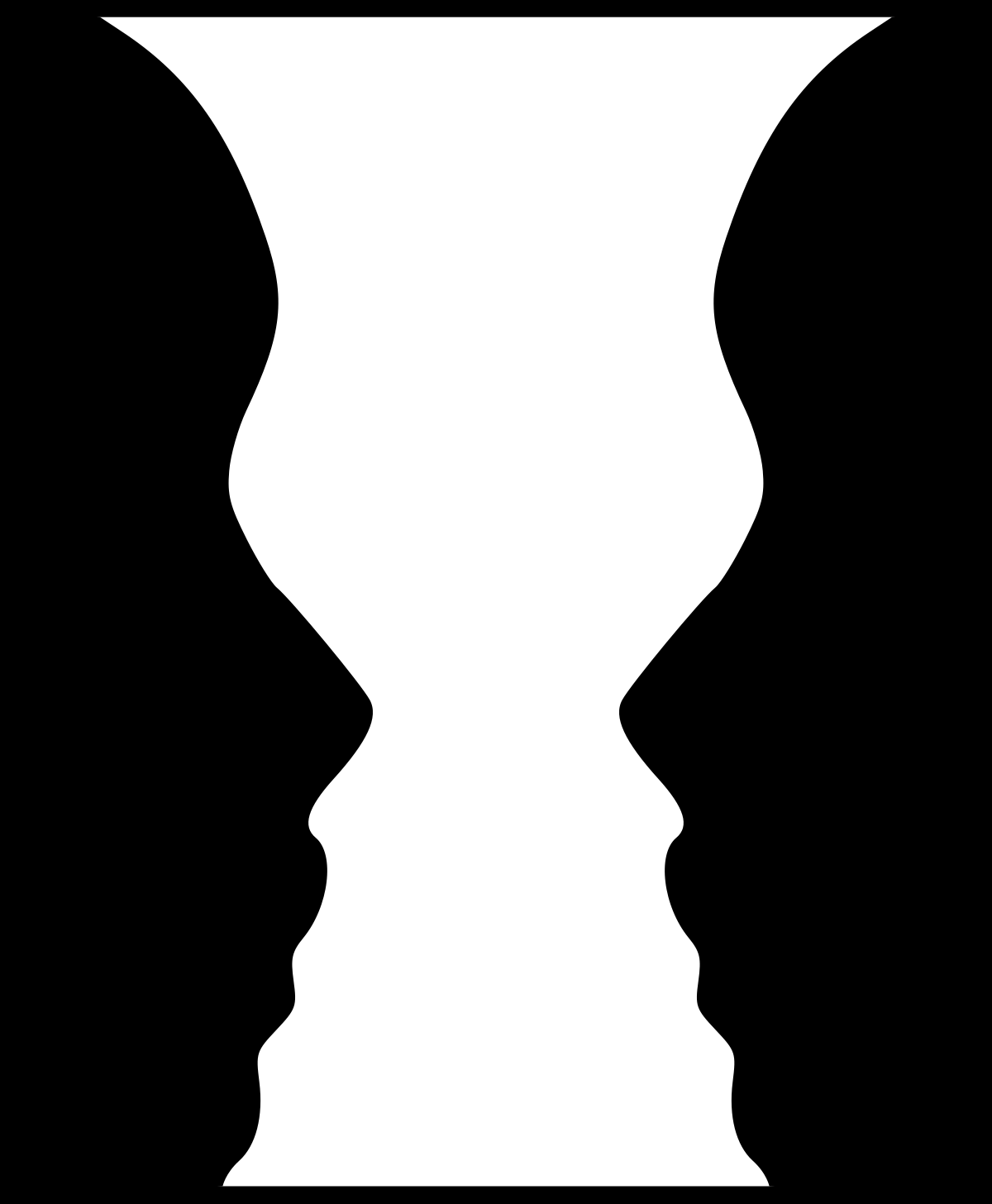
Figure-ground
the organization of the visual field into objects (figure) and surroundings (ground)
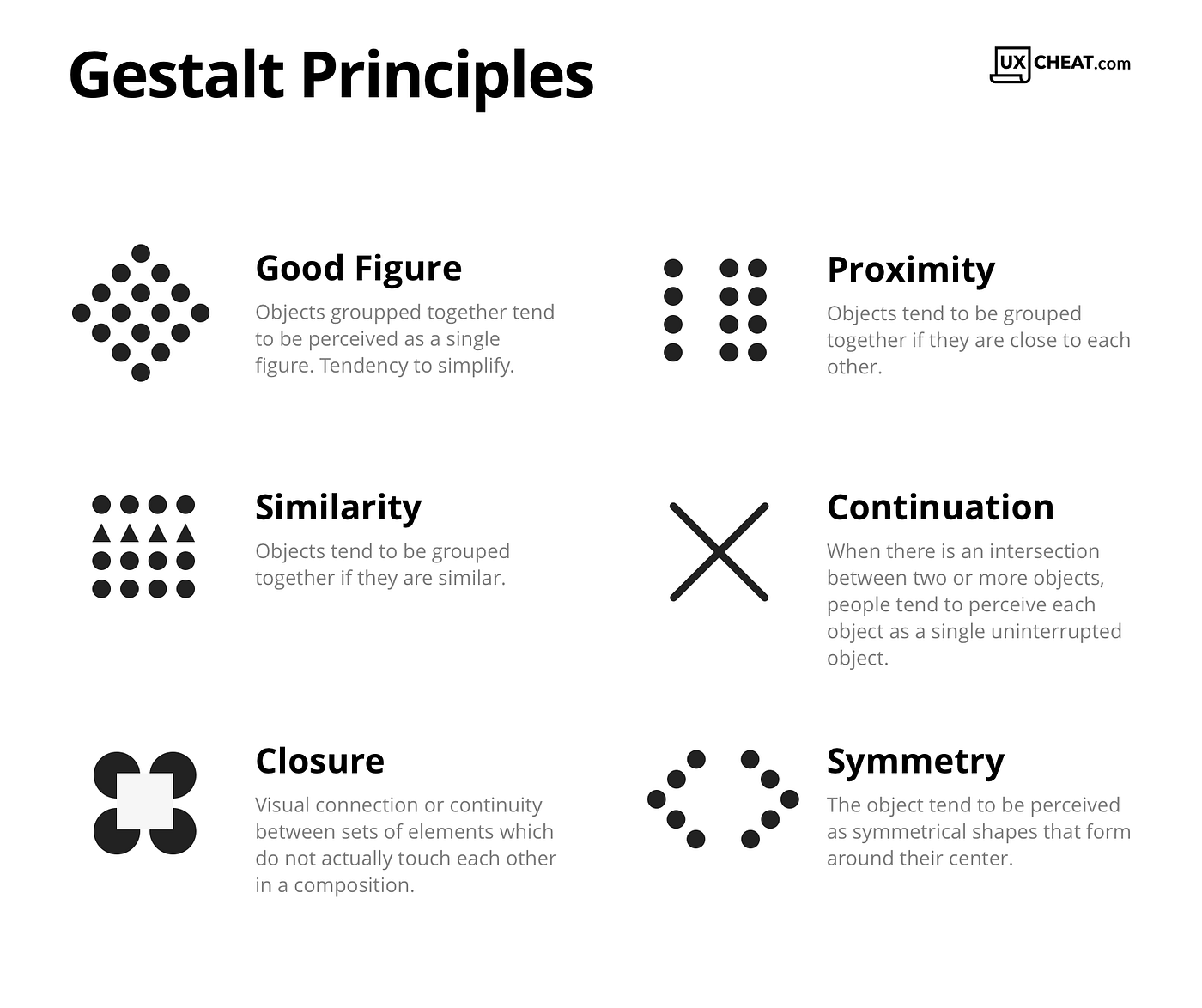
gestalt principles of grouping
the perceptual tendency to organize stimuli into coherent groups
Proximity
we group nearby figures together
Continuity
we perceive smooth, continuous patterns
Closure
we fill in gaps to create complete, whole objects
Similarity
things sharing similar characteristics will be grouped together
Symmetry
elements that are symmetrical to each other tend to appear unified

Common fate
we tend to perceive objects moving in the same direction as a single group
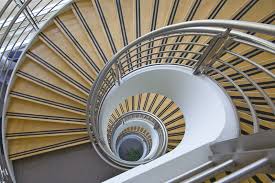
Depth Preception
the visual ability to perceive the world in three dimensions and judge distances.
Gibson & Walk Visual Cliff
a laboratory apparatus used to test depth perception in infants and young animals by observing their willingness to crawl over a perceived "drop-off."
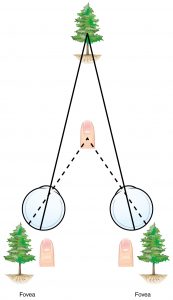
Binocular cues
visual information taken in by two eyes that enable depth perception through comparison of the images.
Retinal desparity
a binocular cue for depth perception that refers to the difference in the images received by the left and right eyes.
Monocular Cues
visual cues for depth perception that require only one eye, such as relative size and motion parallax.

Relative size
a monocular cue that allows us to perceive the size of objects based on their distance from the observer; objects farther away appear smaller compared to those that are closer.
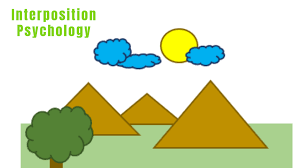
Interposition
a monocular cue for depth perception that occurs when one object overlaps another, making the overlapping object appear closer.
Linear perspective
a monocular cue for depth perception where parallel lines appear to converge as they recede into the distance, creating an illusion of depth.
Motion Perspective
a monocular cue for depth perception that involves changes in the position of objects in relation to the observer's movement, where closer objects appear to move faster than those farther away.